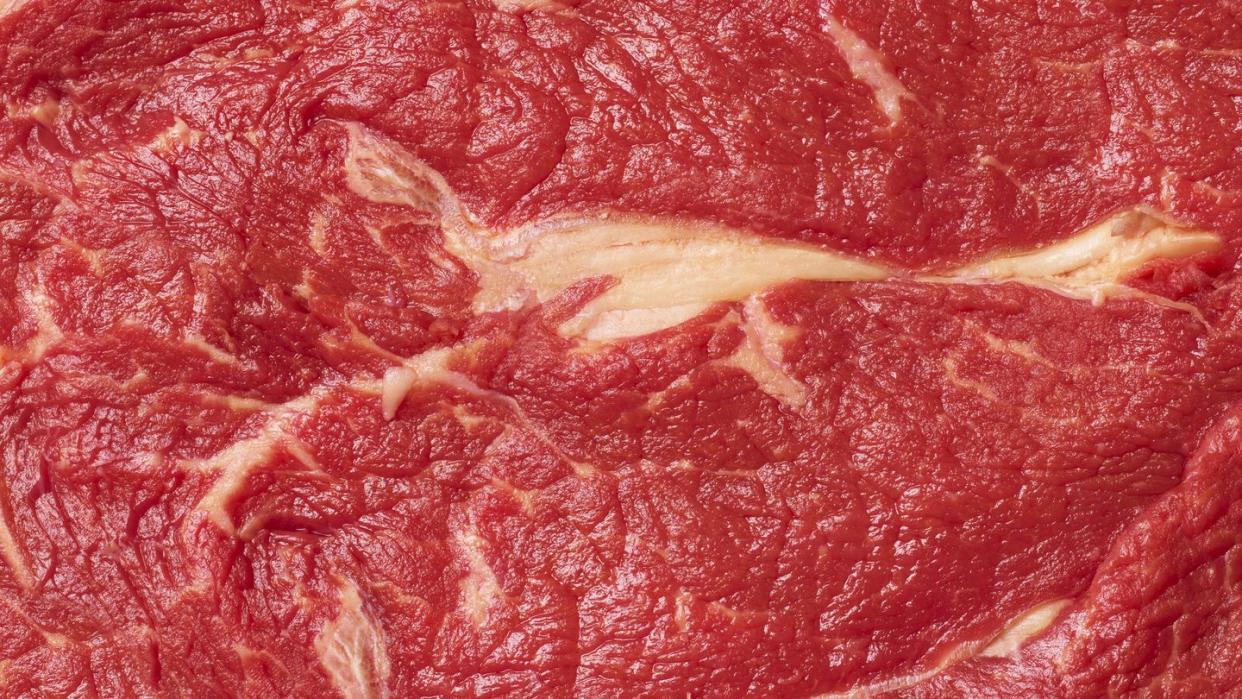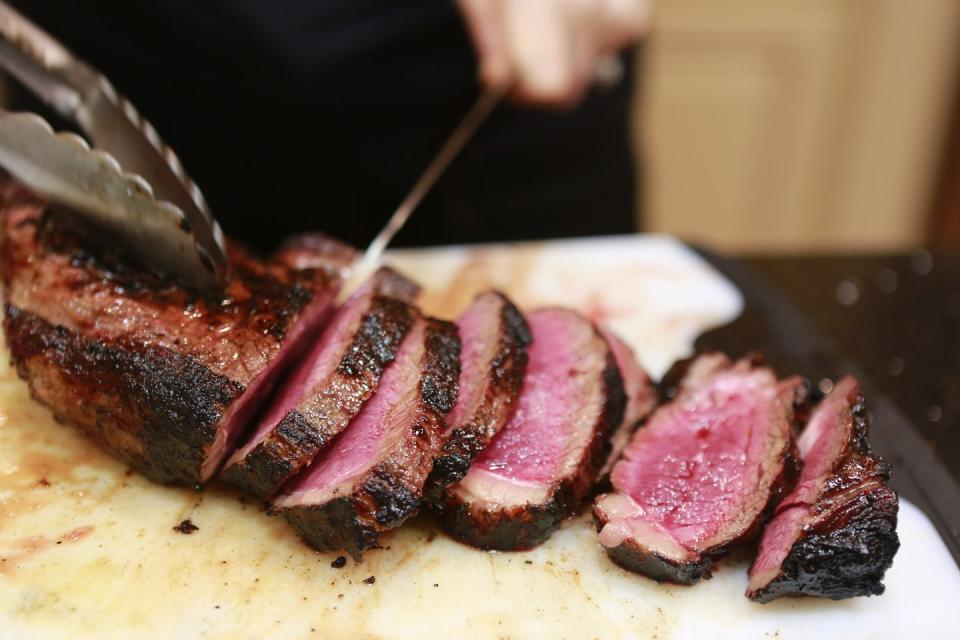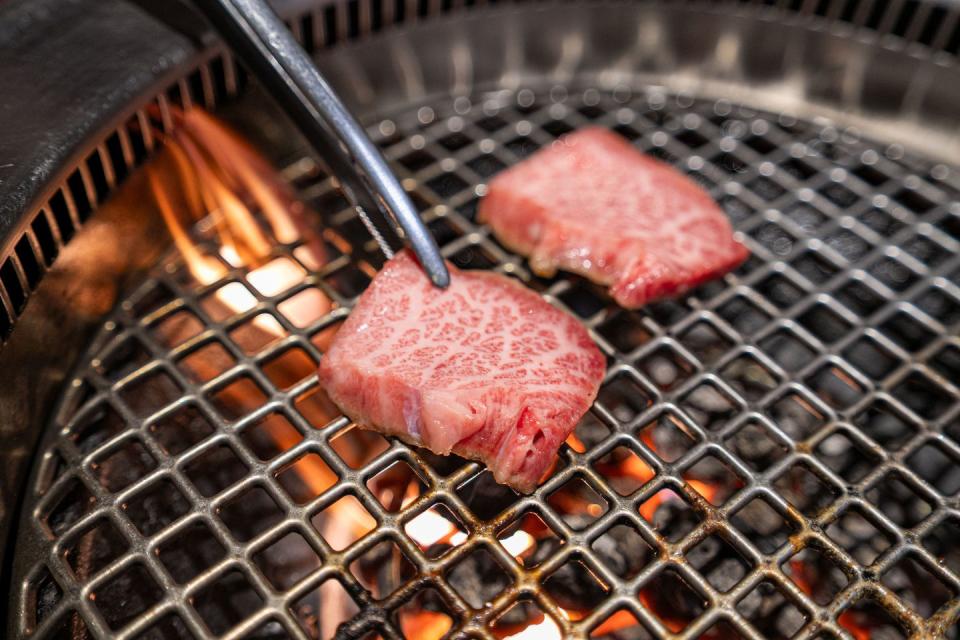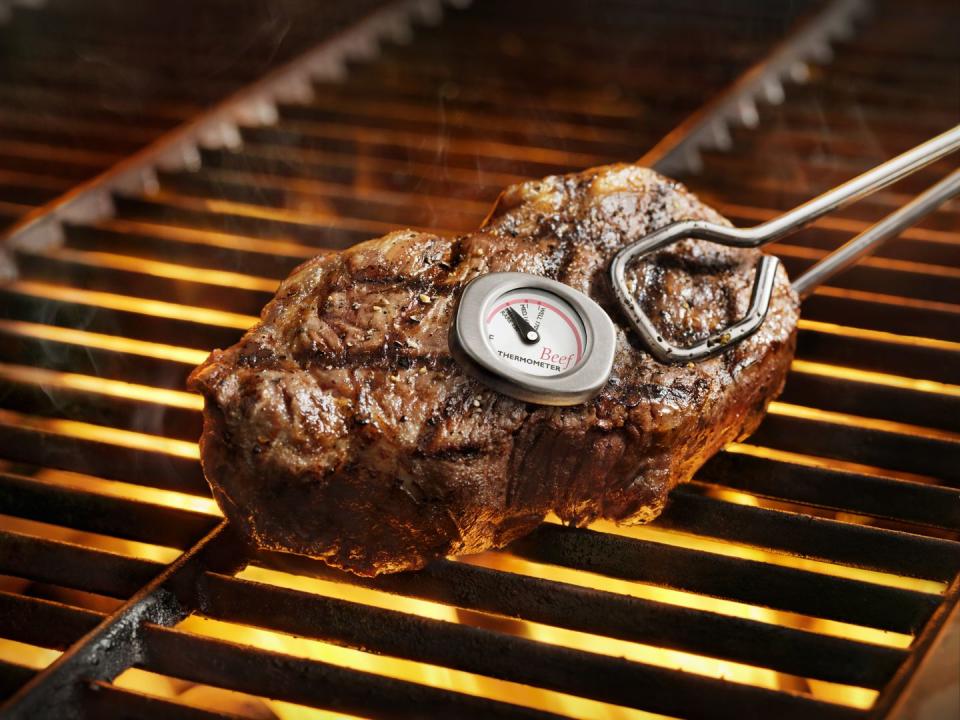These Are The Actual Risks Of Ordering A Rare Steak

Whenever you’re at a steakhouse or any other restaurant that serves beef, you’ll most likely encounter the same disclaimer. Tucked away near the bottom of the menu, a message in fine print alerts us that “consuming raw or undercooked meats, poultry, seafood, shellfish or eggs may increase your risk of foodborne illness.”
State health departments require this disclosure to grace every menu that includes potentially raw or undercooked proteins. But, for the most part, diners choose not to heed that warning.
We still eat steak tartare and beef carpaccio. Ordering steak well done continues to invite judgement and jokes on Saturday Night Live. Medium rare is the preferred level of doneness in the majority of the food industry. So, should we actually be worried about its safety?
We’re unpacking all of the health concerns surrounding eating undercooked beef. Here’s everything you need to know, from the risk levels associated with different dishes, which foodborne illnesses to look out for, and how you can avoid getting sick.
When Is Beef Considered Undercooked?

The USDA has fairly strict guidelines for what constitutes undercooked beef, but the way you eat it matters. Whole cuts of steak—like New York strip, filet mignon, and ribeye—are considered fully cooked when they reach an internal temperature 145°F and rest for a minimum of three minutes. On the scale of meat doneness, that’s on the cusp of medium and medium well.
The rules are different if you’re eating dishes made with ground beef. Federal guidelines state that ground meat is safe to eat once it reaches an internal temperature of 160°F, which sits squarely in well done territory. The reason why you need those extra 15 degrees is because the grinding process increases the surface area for potentially harmful bacteria to find. Once you form ground beef into hamburger patties and meatballs, the bacteria can be present throughout. The bacteria in whole steaks, on the other hand, is typically limited to the exterior surfaces.
So, as a general rule of thumb, any steak cooked to medium rare and below and all burgers that have a hint of pink in the center are technically considered undercooked.
What Are The Risks Associated With Eating Undercooked Beef?

Most of the health concerns associated with eating undercooked beef have to do with bacteria. Two of the most common germs in meat that can cause illness are Salmonella and E. coli. The CDC estimates that the former causes 1.35 million infections and over 400 deaths in the United States annually. E. coli is responsible for approximately 265,000 illnesses and around 60 deaths every year.
While fatal food borne illnesses are possible, many who contract them opt out of medical care and recover without the need for treatment. Depending on a variety of factors, including pre-existing health conditions, symptoms can range from stomach cramps and diarrhea to fevers and vomiting.
The CDC says most cases of Salmonella and E. coli-induced illness resolve after about a week, and they suggest that those experiencing severe symptoms should contact their healthcare provider.
Should We Avoid Eating Undercooked Beef Entirely?

Not necessarily. The disclaimers at the bottom of restaurant menus serve as a warning for potential illness, but that doesn't mean all undercooked beef will make you sick. And they certainly don't stop restaurants from serving rare steak nor stop customers from ordering it.
We all assume some degree of risk when eating any kind of food. The same bacteria that may be present in your steak may also be present in fruits and vegetables; that doesn't mean you should avoid eating salad.
Enjoying a rare steak, sushi, or a runny egg yolk comes with the potential to get sick. But if you don't want to cut these foods out of your diet completely, the best way to minimize the risk is by dining at restaurants that uphold strict hygiene standards. And if you're making food at home, you should practice safe food handling at every stage of the cooking process.
You Might Also Like

